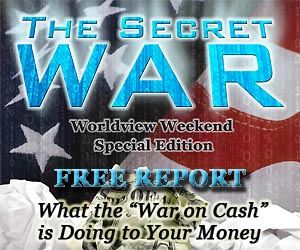The Coming EMP -- Nuclear War
Since Sept. 11, 2001, analysts have been increasingly concerned terrorists might steal, buy, build, or be given a nuclear weapon—and the War on Terrorism would become a nuclear war. The Department of Homeland Security’s National Planning Scenario #1 is detonation of a 10-kiloton nuclear weapon, as powerful as the Hiroshima bomb, in a location such as New York City or Washington, D.C.
Many experts warn an act of nuclear terrorism is not a question of if, but when.
Until the recent protracted nuclear crisis with North Korea, relatively less attention has been paid to the increasing possibility of nuclear war between nations. India and Pakistan are widely regarded as the most likely candidates for a nuclear conflict between states.
Although North Korea, Russia, and China have all made nuclear threats against the United States recently, in the case of North Korea and Russia repeatedly, most analysts dismiss these as mere “bluster” and “nuclear sabre rattling” not to be taken seriously. One day, perhaps soon, this may well prove to be a fatal mistake for millions.
In the West, generations of leaders and citizens have been educated that use of nuclear weapons is "unthinkable" and the ultimate horror. Not so in Russia, China, and North Korea where their nuclear capabilities are publicly paraded, missile launches and exercises are televised as a show of strength, an important part of national pride.
Whereas the U.S. nuclear deterrent is kept low-profile, almost invisible, and its utility and legitimacy much debated, Russia and China run TV documentaries describing how they would win a nuclear war with the United States.
The "international taboo" on nuclear warfare is one-sided and far more likely to have a psychologically paralyzing effect on the U.S. and its allies than on Russia, China, North Korea, or Iran.
An electromagnetic pulse (EMP) attack would be perfect for implementing Russia's strategy of "de-escalation," where a conflict with the U.S. and its allies would be won by limited nuclear use. It's their version of "shock and awe" to cow the U.S. into submission. The same kind of attack is viewed as an acceptable option by China and North Korea as well.
An EMP attack would be the most militarily effective use of one or a few nuclear weapons, while also being the most acceptable nuclear option in world opinion, the option most likely to be construed in the U.S. and internationally as "restrained" and a "warning shot."
Because EMP destroys electronics instead of blasting cities, even some analysts in Germany and Japan, among the most anti-nuclear nations, regard EMP attacks as an acceptable use for nuclear weapons. High-altitude EMP attack entails detonating a nuclear weapon at 30-400 kilometers altitude—above the atmosphere, in outer space, so high that no nuclear effects, not even the sound of the explosion, would be experienced on the ground, except EMP.
An EMP attack will kill far more people than nuclear blasting a city through indirect effects—by blacking out electric grids and destroying life-sustaining critical infrastructures like communications, transportation, food and water—in the long run. But the millions of fatalities likely to eventually result from EMP will take months to develop, as slow as starvation.
Thus, a nation hit with an EMP attack will have powerful incentives to cease hostilities, focus on repairing their critical infrastructures while there is still time and opportunity to recover, and avert national extinction.
Indeed, an EMP attack or demonstration made to "de-escalate" a crisis or conflict is very likely to raise a chorus of voices in the West against nuclear escalation and send Western leaders in a panicked search for the first "off ramp."
Russia, China, North Korea, and Iran in their military doctrines and training regard EMP attack as part of all-out cyber warfare, not necessarily as nuclear warfare.
Our proximity to a nuclear war may be suggested by the simple fact that analysts can now imagine many more possible pathways to a nuclear conflict today than was the case during the Cold War, then dominated by a more or less stable relationship between two nuclear superpowers, the U.S. and USSR.
Today, simply reading the newspapers reveals another possible nuclear confrontation regularly, for those with eyes to see.
For example, it was reported this week that the U.S. will deploy Patriot missiles to the Baltic states for a NATO exercise in July—just before Russia’s big annual military exercise ZAPAD-17 (WEST-17) that usually employs 100,000 troops to practice an invasion of NATO. What could possibly go wrong?
My book "The Long Sunday" explores a dozen possible nuclear EMP attack scenarios that could plausibly happen in the Middle East, Asia, Europe, and against North America—tomorrow.
Some analysts think the world is on the threshold of a "new nuclear age" where Cold War rules and assumptions about deterrence no longer apply and the likelihood of nuclear use is greatly increasing. The first nation to use nuclear weapons today—even a rogue state like North Korea or Iran—will immediately become the most feared and most credible nuclear power in the world, a formidable force to be reckoned with, and perhaps the dominant actor in a new world order.
Dr. Peter Vincent Pry is chief of staff of the Congressional EMP Commission. He served on the staff of the House Armed Services Committee and at the CIA.
Trending Stories
Latest
WE'RE A 100% LISTENER SUPPORTED NETWORK
3 Simple Ways to Support WVW Foundation
Make Monthly Donations
-or-
A One-Time Donation
-
Mail In Your Donation
Worldview Weekend Foundation
PO BOX 1690
Collierville, TN, 38027 USA -
Donate by Phone
901-825-0652














